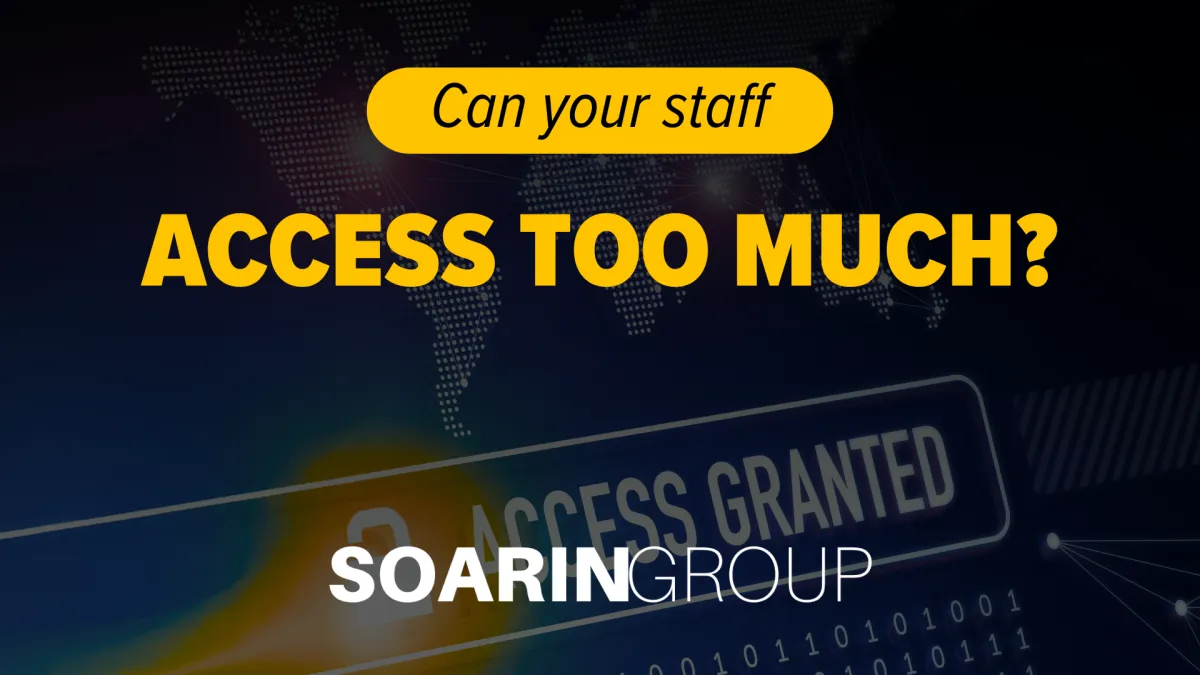
Half of staff have too much access to data
Who Really Has Access to Your Business Data?
Here’s a question worth asking:
Do you know exactly who in your business can access your most critical data right now?
And more importantly… do they actually need that access to do their job?
Most business owners assume access control is set up correctly during onboarding, and then forget about it. But research tells a different story.
Around half of employees have access to far more data than they should.
That’s not just a small oversight. It’s a major cybersecurity risk.
Not necessarily because of bad intentions, but because mistakes happen. When too many people can access sensitive systems or files, you increase the odds of accidental data exposure, compliance issues, or worse… a full-blown security incident.
This type of threat is called insider risk.
It refers to any risk coming from inside your business, employees, contractors, or partners, whether intentional or not.
Sometimes it’s deliberate, like data theft.
But more often, it’s unintentional:
🚫 Clicking a bad link.
🚫 Sending confidential files to the wrong person.
🚫 Or still having access to systems long after leaving the company.
That last one happens more often than you’d think. Nearly 50% of businesses admit that ex-employees still have access to systems months after departure. That’s like leaving the keys to your office with someone who doesn’t work there anymore.
The Hidden Threat: Privilege Creep
“Privilege creep” happens when people slowly accumulate more access over time — maybe after a role change, a new project, or a system upgrade — without losing the old permissions.
It’s rarely intentional, but it means more people can see more than they should. And the more visibility someone has, the greater the chance of a breach.
The Solution: Least Privilege Access
The fix starts with a concept called least privilege.
It means employees get access to only what they need, nothing more.
Combine that with “just-in-time” access, which grants temporary permissions only when necessary, and you dramatically reduce insider risk.
And just as important: access must be revoked immediately when someone leaves your organization.
Taking Control
In today’s cloud-based, AI-driven workplace, managing permissions is more complex than ever, but not impossible. The key is to be proactive:
✅ Regularly review who has access to what.
✅ Tighten permissions as roles evolve.
✅ Use tools that automate access control and flag risky patterns.
The goal isn’t to slow down your team, it’s to keep your business secure and your customers’ data protected.
At Soarin Group, we help businesses design smarter, safer access systems that protect data without disrupting workflow.
🔒 Let’s make sure your permissions aren’t leaving you vulnerable.
👉 Go to www.soaringroup.com to schedule a security access review.
